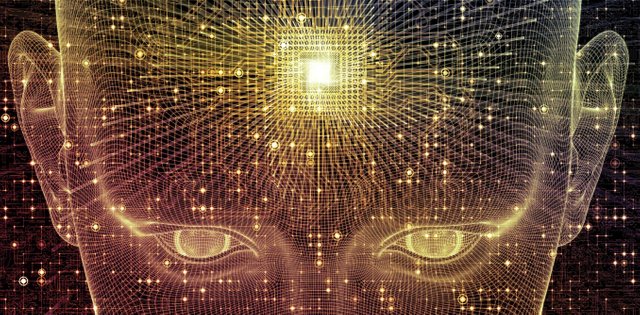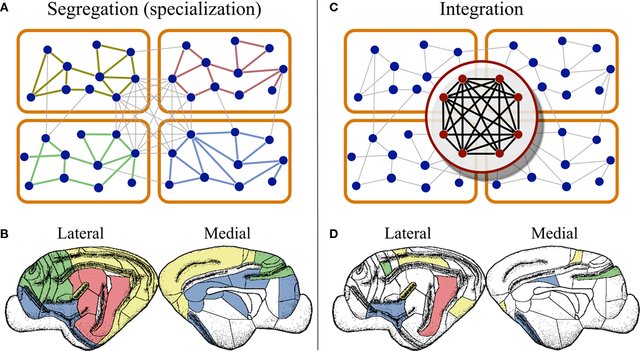What is Consciousness? Integrated Information Theory - IIT is IT!

I have been interested in consciousness my whole life. As far as I can see, nothing compares to the Integrated Information Theory (IIT) in terms of being extraordinary simple, while having explanatory reach, intuitive plausibility, and extremely precise predictions.
According to Tononi's theory there are two aspects that make the phenomenal experiences what they are. First, phenomenal experiences are rich in information. They are informative. Second, this information is integrated. Phenomenal experiences consist of integrated information. To argue for and make clear these two points, Tononi makes use of two philosophical thought experiments.
To characterize informativeness, Tononi uses the The Photodiode Thought Experiment.
The Photodiode Thought Experiment: Imagine a photodiode responding only to light. The photodiode has two options, to remain off or to turn on. Each time there is light causally interacting with the photodiode in a certain way, it will turn on. Does the photodiode see light?
According to Tononi, a crucial difference between us and the photodiode with respect to phenomenal experience is the space of possible discriminations it has. When a photodiode makes a “discrimination between two alternatives, the detector in the photodiode generates log2(2) = 1 bit of information” (Tononi 2008).

When we humans, or other animals, see ‘light,’ by contrast, we discriminate between vast numbers of alternative things that we could have seen. In Tononi’s words, “we are implicitly being much more specific: we simultaneously specify that things are this way rather than that way (light as opposed to dark), that whatever we are discriminating is not colored (in any particular color), does not have a shape (any particular one), is visual as opposed to auditory or olfactory, sensory as opposed to thought-like, and so on” (Tononi 2008). In contrast to the photodiode, we produce much more information when we see light than simply 1 bit of information. We exclude all the trillions of possible states that we have in our repertoire.
To understand why we also need integration, Tononi uses The Camera Thought Experiment.
The Camera Thought Experiment: Imagine a “digital camera, say one whose sensor chip is a collection of a million of binary photodiodes, each sporting a sensor and a detector” (Tononi 2008). With the camera, in contrast to the photodiode, it seems we get a huge amount of information. If we consider the camera “as a single system with a repertoire of 2^1,000,000 states” (Tononi 2008) then we have a million bits of information. When the camera takes a picture, it settles into one of 2^1,000,000 states. If phenomenal experience was just a matter of discriminative information, then it seems that the camera should be very conscious.
What is lacking? Tononi starts with the intuition that this system, “the camera chip is not an integrated entity: since its 1 million photodiodes have no way to interact” (Tononi 2008). The problem is that there is no special vantage point from which we might consider the camera as a single system or entity. What is needed is ultimately “an intrinsic point of view associated with the camera chip as a whole” (Tononi 2008). This is needed because, as it stands, there is no objective measure that uniquely settles which states should be grouped together; there is no intrinsic measure of which alternative representations are relevant, and which are not.

How can we measure and quantify what should count as a single system? According to Tononi, we begin to understand such an objective measure if we cut the camera sensor chip in two, such that it consists of two chunks of 500 thousand photodiodes each. By doing this, we find that the information contained in the whole does not change at all. In fact, if we cut the camera sensor chip into “1 million pieces each holding its individual photodiode, the performance of the camera would not change at all,” (Tononi 2008). The components in this system work independently of the whole.
In contrast to this, Tononi argues that conscious beings only “discriminate among a vast repertoire of states as an integrated system [my emphasis]” (Tononi 2008). For instance, in popularizing his work (Tononi 2012), Tononi uses the example of an Italian speaking person watching the text ‘SONO’ on a screen. The person would read and think of this as “I am.” However if we split this person’s brain in two along the corpus callosum for instance, the left hemisphere might end up reading ‘SO’ which means “I know,” while the right hemisphere ends up reading ‘NO,’ which means “no.” The intuitive idea is that we cannot separate and reduce the various discriminations we make into separate component parts, because they work in a way that is explicable only holistically, unlike the camera.

If this were simply a thought experiment showing that our brain processes information holistically, nothing much would follow. However, Tononi follows it up with a quantitative measure of integrated information. This measure, that he calls phi (Φ), is an exact measure of how much information is generated above and beyond the information generated by the parts of the system (Tononi and Sporns 2003). There are other efforts in the same direction.
I won’t go into how this quantity is measured here, but it is worth noting that given a few natural assumptions, we can get an overview of the space of possible mathematical definitions of integrated information. So given a natural concept of information above and beyond the information in the parts, there is only a handful of good definitions, as outlined by Max Tegmark in a recent talk he gave at the Foundational Questions Institute:
Predictions
The upshot is that such a theory can use this measure in explaining phenomenal experience; Tononi’s theory has testable predictions; and retrodicts that we should find experience where we do in fact find it. While specific predictions are forthcoming due to computational limitations, Tononi holds that it can at least account for why experience occurs on such and such a time-scale and spatial scale. The efforts by Max Tegmark and others can also yield computationally viable approximations, that we can use to test the theory against experimental data.
In addition, Tononi holds that it can account for why specific parts of the brain such as the cerebellum, or specific states, such as dreamless sleep, anesthetics, and epileptic seizures are not associated with consciousness, even though they often involve just as much, or more neuronal activity. Further, Tononi argues in his (Balduzzi and Tononi 2009) that the phenomenal characters of experience can partly be accounted for by a ’geometry of integrated information.’
Conclusion
Although highly intriguing, it is outside the scope of this essay to explain in detail how Tononi’s theory works out. In general it is also outside the scope of a philosophical essay to decide whether a scientific theory is correct or not. What this case shows is that there at least is a scientific theory, consistent with the known facts, that phenomenal experience is created by a certain kind of information integration in the brain.
I hope you enjoyed this article. Feel free to share your thoughts in the comments and follow @clains if you want more content on philosophy, blockchain, consciousness, psychedelia and spirituality. :)
References
Tononi, G. (2004). "An information integration theory of consciousness."
Tononi, G. (2008). "Consciousness as Integrated Information: a Provisional Manifesto."
Tononi, G. (2012). Phi: A Voyage from the Brain to the Soul
Tononi, G. and O. Sporns (2003). "Measuring information integration."
Zimmer, C. (2012). Sizing Up Consciousness by Its Bits. The New York Times.
Good summary upvoted and resteemed. What struck me in Tononi's paper was the possibility of the occurrence of feedforward complexes that behaved like consciousness, but lacked the integration. Spooky!
Yes! It's a great case that goes beyond behaviorist thought such as the Turing test and computational functionalism. Searle got ridiculed for his Chinese room experiment, but this shows exactly why it might be so.
That's a great observation. I had never connected these feedforward processes with systems that seem to be having human level consciousness, but actually don't. Since you are obviously a man of science, you might be interested in this post I wrote today: https://steemit.com/science/@technovedanta/spectacular-science-breakthrough-cells-making-carbon-silicon-bonds-life-but-not-as-you-know-it
Thanks. Do you know of Orch-OR, the theory of quantum conciousness postulated by Sir Roger Penrose and Prof Start Hameroff?
That is worth more than just a quick look.
Yes, I have seen that and other theories. I don't dismiss the idea of quantum consciousness in general, but I haven't seen any theories that have the kind of theoretical explanatory power that IIT has. If I had to go in that direction, I would combine it with the approach Tononi has taken. Tononi is very neutral and cautious with regards to ontological issues, partly perhaps because he's not as confident in his understanding of physics. He had a talk in Oslo a few years back for students, and I asked him about this very issue, because I was concerned with the ontology, but he turned it around, saying we should have the ontology to fit consciousness, rather than the other way around. He did mention Judea Pearl however, who has a theory of causality that turns the issue slightly sideways.
interesting ))
Thank you :)
Another great piece on consciousness. The idea of consciousness rising from systems of information brings to mind "strange loops" for me. I am adding Tononi to my reading list.
Btw, I made note of this piece along with your spiritual journey in pictures in the #philosophical review today: https://steemit.com/philosophy/@aaanderson/the-philosophy-review-nov-27-2016
I am a big fan of Markram and Tononi as well, nevertheless when (if) doing "science" we should always need to start from the null-hypothesis which is "conscience doesn't exist as a fenomena". Then you first proof (with measuring) that conscience exists, and then you ask how it works... to start investigating something just assuming it exists, is quite a bad practice....
Science starts with the assumption that the world exists (against idealism). We can't doubt our own awareness without being aware. I don't see how such a position is intelligible.
in terms of philosophy this seems ok. unfortunately, science has methods. this is related to the need to produce applications known as experiments. no null hypotesys, no science. it is about research methods. speculations like yours have a little to do with it.
Well you can't prove anything with science, you create a hypothesis and then try to disprove it with experiments. The null-hypothesis most generally is "nothing exists" and you can never "prove" that it is wrong, you can only make an alternative hypothesis. The world exists is one hypothesis, that consciousness exists is another. It's difficult to talk about science without going into the philosophy of science. Science as a method is not itself a scientific hypothesis, it's an approach to study the natural world, and discussions around that approach is philosophy of science. On those grounds I'd say the hypothesis that consciousness exists is more natural even than the hypothesis than that the world exists, it only so happens that it's easier to create a useful hypothesis about the latter.
This is probably what is told into some liberal art university about science. I am not going to discuss what is told to people doing liberal art, it is pointless.
Ad hominem.
This post has been linked to from another place on Steem.
Learn more about and upvote to support linkback bot v0.5. Flag this comment if you don't want the bot to continue posting linkbacks for your posts.
Built by @ontofractal